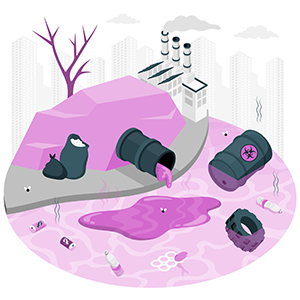Water and Wastewater Management
Indonesia, the world’s fourth most populous country, is becoming increasingly urban. Today over half of the population lives in cities; by 2045, the centenary of Indonesia’s independence, nearly three-quarters will.
Analysis by World Bank shows only 2 percent of households in the core of Jakarta, which has a population of 10 million, are connected to the public sewerage system. Most urban households have septic tanks – but they leak, and so hardly need desludging. The effluent is not always disposed into the treatment plants for those households that do desludging. 95 percent of Indonesia’s wastewater flows into agricultural fields, rivers, and open drains.
The health repercussion of this are immense. Poor quality of groundwater contributes directly to infant mortality (212 per 1000 births compared to 59 per 1000 in other middle-income countries in South East Asia). Indonesia also suffers from a disproportionately high incidence of typhoid for its region and income level, and stunting has become a severe health issue.

Example of Potential GII Investments
- Improvement of public water supply in terms of quality, coverage (connections) and reliability.
- Raw water source assessment for a new or expanding supply network(s) – local versus regional supply.
- Reduction of non-revenue water (NRW) losses.
- Digitalization of billing and collection systems.
- Improved digital diagnostic and O&M procedures.
- Water safety in cities.
- Rainwater collection and drainage systems.
- Integrated sewerage systems including septic tanks and grey water from households using appropriate technologies.
- Flood protection of coastal towns and cities along rivers.
- Adaption of public spaces (streets, squares etc.) as retention basins for the containment of heavy rainfall events (sponge city concept).
- Energy generation from biogas in existing wastewater treatment plants including potential for co-digestion of organic liquid wastes.
- Energy efficiency.
- Collection and treatment of fecal sludge from decentralized sanitary systems.
- Institutional framework constraints – structural, human resources.
 English
English Indonesia
Indonesia